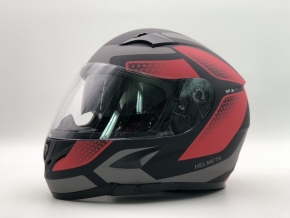How to choose a reliable motorcycle Helmet ?

The price of motorcycles is not good enough. I don't know how the quality of the motorcycle is bad. It is an invariable market rule that every penny of goods is sold. Products with high prices are not necessarily of good quality. However, there must be no cheap and high-quality products. First of all, we should remember this. Let's talk about safety standards for helmets. At present, there are three main safety inspection standards for motorcycle helmets: Dot standard, ECE standard and Snell standard. Dot standard is American Inspection standards. The Department of Transportation is an abbreviation for the United States Department of Transportation. The helmet safety standard is a mandatory market standard. All motorcycle helmets sold in the U.S. market must meet this safety standard before they are allowed to be sold. The inspection standards include plane method, hemispherical method and puncture method, which are implemented by relevant departments in the United States. Due to its "ancient" history, this set of standards is no longer the safety standard for high-end helmets and is relatively backward. ECE motorcycle safety inspection standard is the main standard for high-end helmets and one of the main standards for helmets produced and sold in the EU market. The safety level of ECE motorcycle is more stringent than the dot standard. Finally, there are Snell safety standards. This standard is professional. Many professional drivers wear professional helmets to meet this standard. The requirements are stricter and the safety level is higher. In addition, the shell materials of the helmet are mainly thermoplastic plastic, glass fiber reinforced plastic and carbon fiber. Thermoplastic is not suitable for manufacturing motorcycle helmets. Its impact resistance is poor and its price is low relatively Low. If you fall in love with the helmet, but do not know the shell material, I suggest you give up. But polycarbonate is also one of the thermoplastics. Its physical properties are better than ordinary thermoplastics, and its price is cheap -The combination of butadiene styrene copolymer is a common so-called ABS engineering plastic material. The helmet shell made of this material has good impact resistance, and is generally the preferred shell material for low-end helmets. Fiberglass is the common name of glass fiber. Its physical properties are better and more stable than ABS engineering plastics, and it can withstand the test of time. It is the first material for high-end helmets. The carbon fiber shell is generally combined with the aramid Kevlar polymer material. The carbon fiber material has good structural strength, and the latter has excellent tensile capacity, so it is a perfect combination. It is not only high in strength, but also light in weight. The only disadvantage is that it is expensive. Generally, it is the combination of materials selected for high-end helmets. The buffer layer is also the main component of the helmet. In a sense, the existence of the buffer layer prevents your head from being subjected to strong shock when hit, which is of great significance. At present, the buffer layer of most motorcycle helmets is made of EPS foam, but there are also some concerns. A good helmet buffer layer should be composed of double-layer or multi-layer EPS foam. The outer layer is hard and the inner layer is soft, which can respectively absorb shocks with different strengths. Cheap helmets generally only tell you that it is the buffer layer of EPS foam, It won't tell you how many layers are composed, but the single layer foam is the most likely one.


